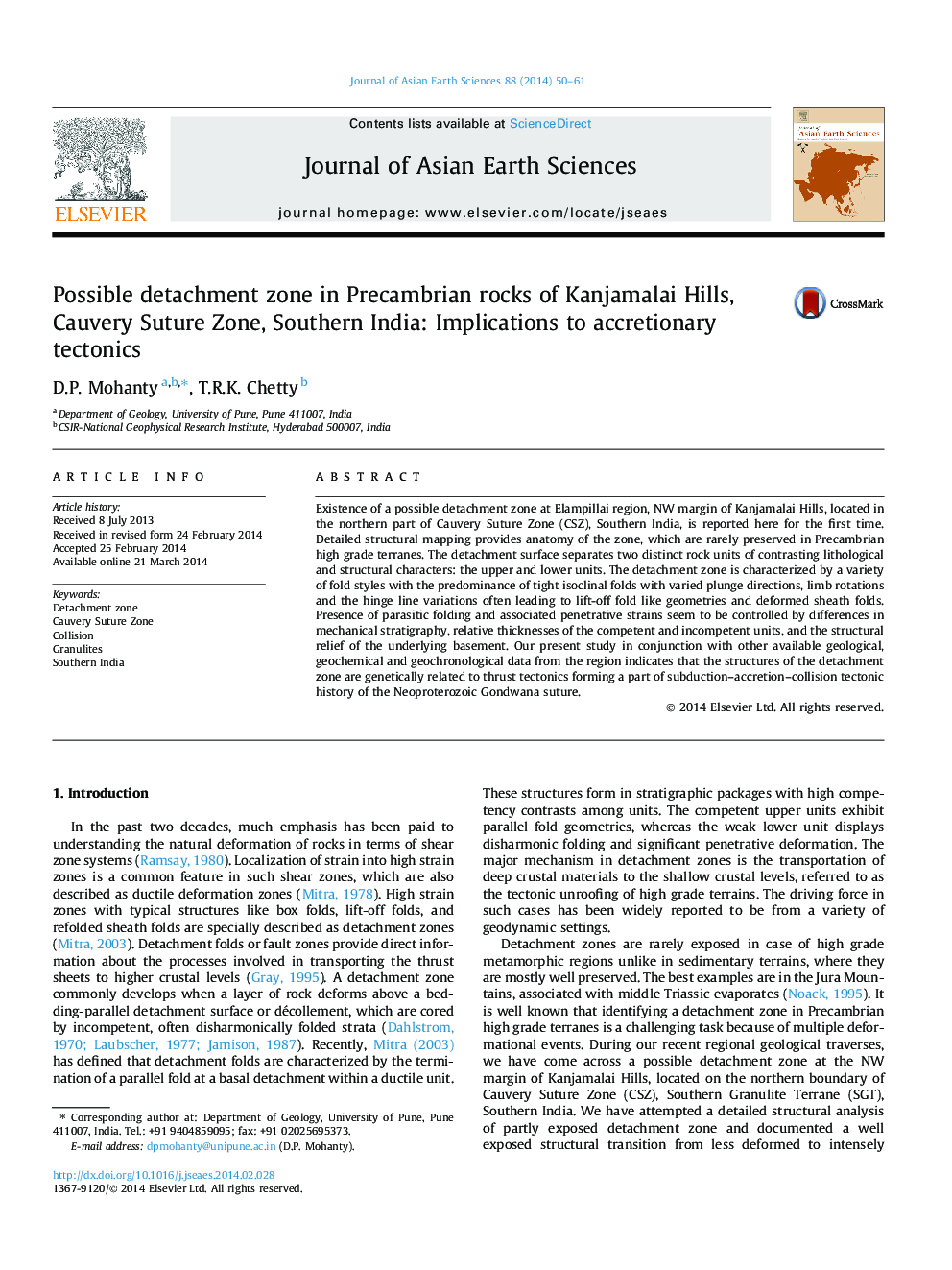| Article ID | Journal | Published Year | Pages | File Type |
|---|---|---|---|---|
| 4730666 | Journal of Asian Earth Sciences | 2014 | 12 Pages |
•A possible Precambrian detachment zone is reported for the first time from the CSZ.•A range of complex structural styles of different scales occur in the detachment zone.•Box fold, lift-off fold, recumbent folds, flanking structure and deformed sheath folds.•Thrust tectonics within subduction–accretion–collision during east Gondwana assembly.
Existence of a possible detachment zone at Elampillai region, NW margin of Kanjamalai Hills, located in the northern part of Cauvery Suture Zone (CSZ), Southern India, is reported here for the first time. Detailed structural mapping provides anatomy of the zone, which are rarely preserved in Precambrian high grade terranes. The detachment surface separates two distinct rock units of contrasting lithological and structural characters: the upper and lower units. The detachment zone is characterized by a variety of fold styles with the predominance of tight isoclinal folds with varied plunge directions, limb rotations and the hinge line variations often leading to lift-off fold like geometries and deformed sheath folds. Presence of parasitic folding and associated penetrative strains seem to be controlled by differences in mechanical stratigraphy, relative thicknesses of the competent and incompetent units, and the structural relief of the underlying basement. Our present study in conjunction with other available geological, geochemical and geochronological data from the region indicates that the structures of the detachment zone are genetically related to thrust tectonics forming a part of subduction–accretion–collision tectonic history of the Neoproterozoic Gondwana suture.
